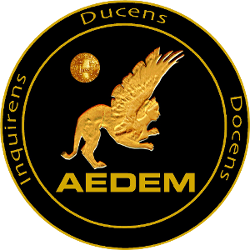European Journal of Management and Business Economics, EJM & BE, is interested in the publication and diffusion of articles of rigorous theoretical, methodological or empirical research associated with the areas of strategy, finance, management, marketing, organisation, human resources, operations, corporate governance and tourism. The Journal attempts to attract original knowledge based on academic rigour and of relevance for academics, researchers, professionals, and/or public decision-makers.
The electronic version of EJM & BE is Open Access and it will use the Creative Commons licence. The autor/s will transfer the copyright to the Society and will select the use of CC BY-NC-ND License (Creative Commons Attribution-NonCommercial-NoDerivatives License), which permit the article to be read, printed and downloaded, as well as distributed it in Open Access repositories. This license will not permit the extraction of data, translating the article, the re-use of extracts in other articles or for commercial use. .
Submission guidelines
Manuscripts must be submitted online through this here. Please download user manual here. The manuscripts must be originals, unpublished and not be in a review process or be approved for their publication in another journal. Manuscripts should be in English. Spanish can be used only under special conditions to be accepted by the Editor. It is not necessary to belong to the European Academy of Management and Business Economics to submit papers.
To ensure anonymity in the review process, the authors will submit the following documents in a PDF format:
• Cover Letter that will include both, the contribution of the paper and a statement including that the manuscript is original, unpublished and not be in a review process or be approved for their publication in another journal.
• Identification Document that will include the title, authors, with detailed affiliations of University, Department, postal and e-mail address, acknowledgements and funding, if applicable. This file will be named as D0C1.
• Anonymous manuscript, named as D0C2, which will contain:
o The title, an abstract of a maximum of 200 words and a maximum of five keywords and the JEL codes (The Journal of Economic Literature can be consulted at: https://www.aeaweb.org/econlit/jelCodes. php?view=jel).
o Text of the manuscript with a maximum length of 8,000 words, double-spaced, including graphs, tables, notes and literature references. Additional material (Tables, diagrams, figures, graphs and other illustrations) will be quoted as “Tables” or “Figures”, consecutively numbered and will it be included at the end of the anonymous manuscript, and their preferred location will be indicated in the text
• Supplementary material may also be submitted, D0C3, for its online publication with non-essential developments or analysis. This document is optional.
Manuscript style guide
References to other publications must be in Harvard style. You should cite publications in the text: (Anderson, 2017) using the first named author name or (Arderson and Bell, 2017) citing both names of two, or (Anderson et al., 2007), when there are three or more authors. At the end of the paper a reference list in alphabetical order should be supplied. Papers should be cited as follows: Anderson, B. and Bell, B. (2017), (Innovation drives energy”, Journal of Energy, Vol. 26 No.1, pp. 1-24
Evaluation Criteria
The evaluation is based on quantitative and qualitative criteria and both the content and the presentation aspects will be taken into account. The content will be evaluated quantitatively on a scale according to the following criteria: (i) Relevance of the topic; (ii) An adequate and sufficient review of the literature; (iii) Suitable research methodology; (iv) Relevance of the implications and conclusions; (v) Contribution to the knowledge or existing literature; and a general criterion called Overall Content Evaluation. The presentation will be evaluated in accordance with style norms and the following criteria: Adequate style and writing, and writing clarity and comprehension. Additionally, manuscripts will receive a specific and constructive qualitative evaluation aimed at improving the work and which looks at, among others, the following aspects: (i) contribution and strengths of the manuscript; (ii) weaknesses and suggested improvements; (iii) potential developments or perspectives that may enrich the manuscript; (iv) specific comments on the title, abstract and conclusions; (v) clarity in the drafting of aims/objectives, hypothesis, sections order and/or errors.
Steps after submission:
1.Initial acceptance or rejection by the Editor (ED) or Associate Editor (AE) according to the general relevance and rigour. Estimated period: 1 week.
2. Appointing of two anonymous reviewers for the blind assessment according to the following criteria: topic relevance, contribution, review of the literature, methodology employed, and writing clarity.
3. Decision to continue or reject, taking into account the reports of the reviewers. Resolving of discrepancies by the ED, AE, or a third reviewer. The works will be reviewed attempting to minimise the times.
4. Response to each comments and improvements suggested by the reviewers with the updated version of the manuscript.
5. Re-evaluation and where applicable, acceptance, sending of gallery proofs for revision and advance publication online.
Please send an email to mailto:ejmbe@redaedem.org for any other doubt.
